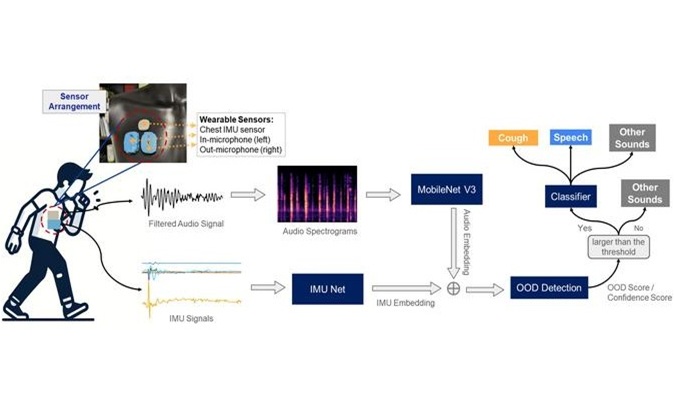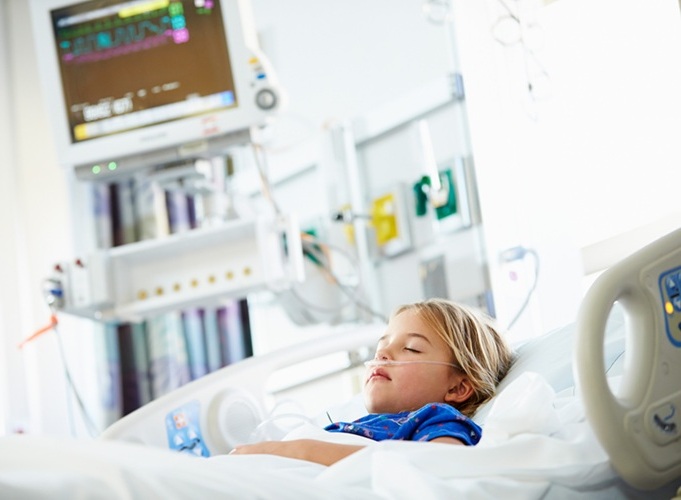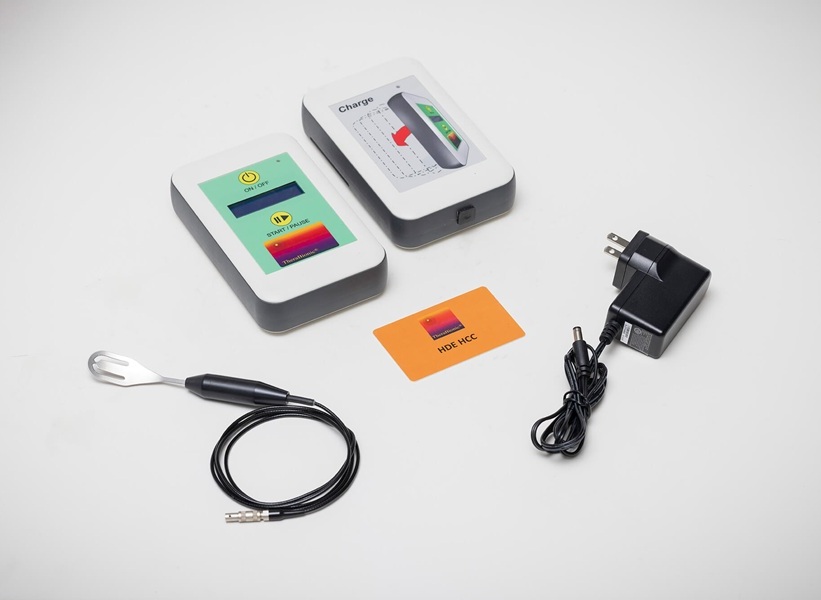Preterm Birth Linked to Increased Risk of Autism
|
By HospiMedica International staff writers Posted on 31 Aug 2021 |

Image: Pre-term birth can lead to higher risk of ASD (Photo courtesy of CanStockPhoto)
Preterm and early birth is associated with an increased risk of autism spectrum disorder (ASD), independent of genetic or environmental factors, according to a new study.
Researchers at Lund University (LU; Malmö, Sweden) and the Icahn School of Medicine at Mount Sinai (MSSM; New York, NY, USA) conducted a national cohort study that included all 4,061,795 singleton infants born in Sweden during 1973–2013 who survived to age one year, and who were followed-up for ASD, as identified from nationwide outpatient and inpatient diagnoses through 2015. The study wished to examine whether gestational age at birth was associated with ASD. Co-sibling analyses were used to assess the influence of unmeasured shared familial (genetic and/or environmental) factors.
The results showed that ASD prevalence, as reflected by gestational age at birth, were 6.1% for extremely preterm (22–27 weeks), 2.6% for very to moderate preterm (28–33 weeks), 1.9% for late preterm (34–36 weeks), 2.1% for all preterm (lower than 37 weeks), 1.6% for early term (37–38 weeks), and 1.4% for term (39–41 weeks) births. Adjusted prevalence ratios comparing extremely preterm, all preterm, or early term (versus term) were 3.72, 1.35, and 1.11 in boys, and 4.19, 1.53, and 1.16, among girls, respectively. These associations were only slightly offset after controlling for shared familial factors. The study was published in the August 2021 issue of Pediatrics.
“Children born prematurely need early evaluation and long-term follow-up to facilitate timely detection and treatment of autism, especially those born at the earliest gestational ages,” said lead author Casey Crump, MD, PhD, of MSSM. “More research is needed to understand the biologic mechanisms linking preterm birth with higher risks of autism. In patients of all ages, gestational age at birth should be routinely included in history-taking and medical records to help identify in clinical practice those born preterm or early term.”
ASD affects six per 1,000 children, and occurs more often among boys than girls. ASD affect three different areas of a child's life - social interaction, communication (both verbal and non-verbal), and behaviors and interests. The three main types are Asperger's syndrome, pervasive developmental disorder, not otherwise specified (PDD-NOS), and autistic disorder. The DSM -5 also included two rare but severe autistic-like conditions, called Rett syndrome and childhood disintegrative disorder.
Related Links:
Lund University
Icahn School of Medicine at Mount Sinai
Researchers at Lund University (LU; Malmö, Sweden) and the Icahn School of Medicine at Mount Sinai (MSSM; New York, NY, USA) conducted a national cohort study that included all 4,061,795 singleton infants born in Sweden during 1973–2013 who survived to age one year, and who were followed-up for ASD, as identified from nationwide outpatient and inpatient diagnoses through 2015. The study wished to examine whether gestational age at birth was associated with ASD. Co-sibling analyses were used to assess the influence of unmeasured shared familial (genetic and/or environmental) factors.
The results showed that ASD prevalence, as reflected by gestational age at birth, were 6.1% for extremely preterm (22–27 weeks), 2.6% for very to moderate preterm (28–33 weeks), 1.9% for late preterm (34–36 weeks), 2.1% for all preterm (lower than 37 weeks), 1.6% for early term (37–38 weeks), and 1.4% for term (39–41 weeks) births. Adjusted prevalence ratios comparing extremely preterm, all preterm, or early term (versus term) were 3.72, 1.35, and 1.11 in boys, and 4.19, 1.53, and 1.16, among girls, respectively. These associations were only slightly offset after controlling for shared familial factors. The study was published in the August 2021 issue of Pediatrics.
“Children born prematurely need early evaluation and long-term follow-up to facilitate timely detection and treatment of autism, especially those born at the earliest gestational ages,” said lead author Casey Crump, MD, PhD, of MSSM. “More research is needed to understand the biologic mechanisms linking preterm birth with higher risks of autism. In patients of all ages, gestational age at birth should be routinely included in history-taking and medical records to help identify in clinical practice those born preterm or early term.”
ASD affects six per 1,000 children, and occurs more often among boys than girls. ASD affect three different areas of a child's life - social interaction, communication (both verbal and non-verbal), and behaviors and interests. The three main types are Asperger's syndrome, pervasive developmental disorder, not otherwise specified (PDD-NOS), and autistic disorder. The DSM -5 also included two rare but severe autistic-like conditions, called Rett syndrome and childhood disintegrative disorder.
Related Links:
Lund University
Icahn School of Medicine at Mount Sinai
Latest Patient Care News
- Revolutionary Automatic IV-Line Flushing Device to Enhance Infusion Care
- VR Training Tool Combats Contamination of Portable Medical Equipment
- Portable Biosensor Platform to Reduce Hospital-Acquired Infections
- First-Of-Its-Kind Portable Germicidal Light Technology Disinfects High-Touch Clinical Surfaces in Seconds
- Surgical Capacity Optimization Solution Helps Hospitals Boost OR Utilization

- Game-Changing Innovation in Surgical Instrument Sterilization Significantly Improves OR Throughput
- Next Gen ICU Bed to Help Address Complex Critical Care Needs
- Groundbreaking AI-Powered UV-C Disinfection Technology Redefines Infection Control Landscape
- Clean Hospitals Can Reduce Antibiotic Resistance, Save Lives
- Smart Hospital Beds Improve Accuracy of Medical Diagnosis
- New Fast Endoscope Drying System Improves Productivity and Traceability
- World’s First Automated Endoscope Cleaner Fights Antimicrobial Resistance
- Portable High-Capacity Digital Stretcher Scales Provide Precision Weighing for Patients in ER
- Portable Clinical Scale with Remote Indicator Allows for Flexible Patient Weighing Use
- Innovative and Highly Customizable Medical Carts Offer Unlimited Configuration Possibilities
- Biomolecular Wound Healing Film Adheres to Sensitive Tissue and Releases Active Ingredients
Channels
Critical Care
view channel
Origami Robots to Deliver Medicine Less Invasively and More Effectively
Delivering medicine to ulcers or other internal sites often requires invasive procedures that can disrupt surrounding tissues and lengthen recovery times. Traditional magnetic actuators used in soft robotics... Read more
Improved Cough-Detection Technology Aids Health Monitoring
Coughing serves as an important biomarker for tracking a variety of conditions and can help monitor the progress of respiratory diseases or predict when someone’s asthma is being exacerbated.... Read moreSurgical Techniques
view channel
Novel Glue Prevents Complications After Breast Cancer Surgery
Seroma and prolonged lymphorrhea are among the most common complications following axillary lymphadenectomy in breast cancer patients. These postoperative issues can delay recovery and postpone the start... Read more
Breakthrough Brain Implant Enables Safer and More Precise Drug Delivery
Delivering medication directly to specific regions of the brain has long been a major challenge in treating neurological disorders. Current implants and infusion systems typically reach only one or two... Read moreHealth IT
view channel
Printable Molecule-Selective Nanoparticles Enable Mass Production of Wearable Biosensors
The future of medicine is likely to focus on the personalization of healthcare—understanding exactly what an individual requires and delivering the appropriate combination of nutrients, metabolites, and... Read moreBusiness
view channel
Philips and Masimo Partner to Advance Patient Monitoring Measurement Technologies
Royal Philips (Amsterdam, Netherlands) and Masimo (Irvine, California, USA) have renewed their multi-year strategic collaboration, combining Philips’ expertise in patient monitoring with Masimo’s noninvasive... Read more
B. Braun Acquires Digital Microsurgery Company True Digital Surgery
The high-end microsurgery market in neurosurgery, spine, and ENT is undergoing a significant transformation. Traditional analog microscopes are giving way to digital exoscopes, which provide improved visualization,... Read more
CMEF 2025 to Promote Holistic and High-Quality Development of Medical and Health Industry
The 92nd China International Medical Equipment Fair (CMEF 2025) Autumn Exhibition is scheduled to be held from September 26 to 29 at the China Import and Export Fair Complex (Canton Fair Complex) in Guangzhou.... Read more
















